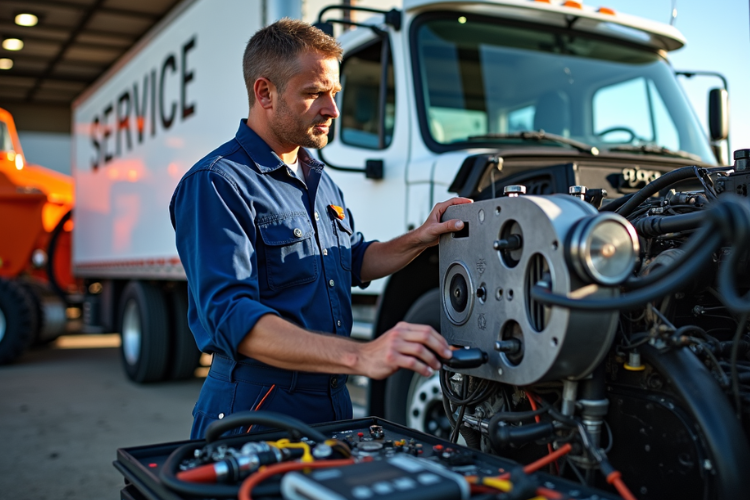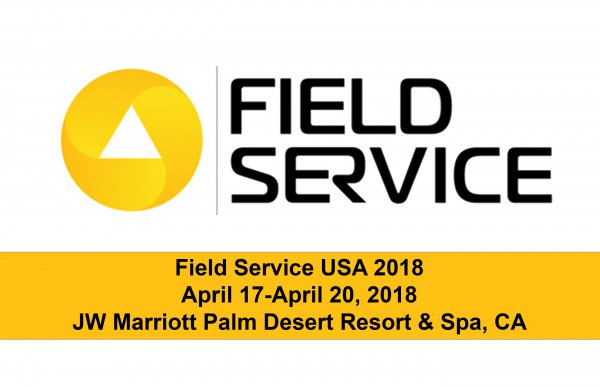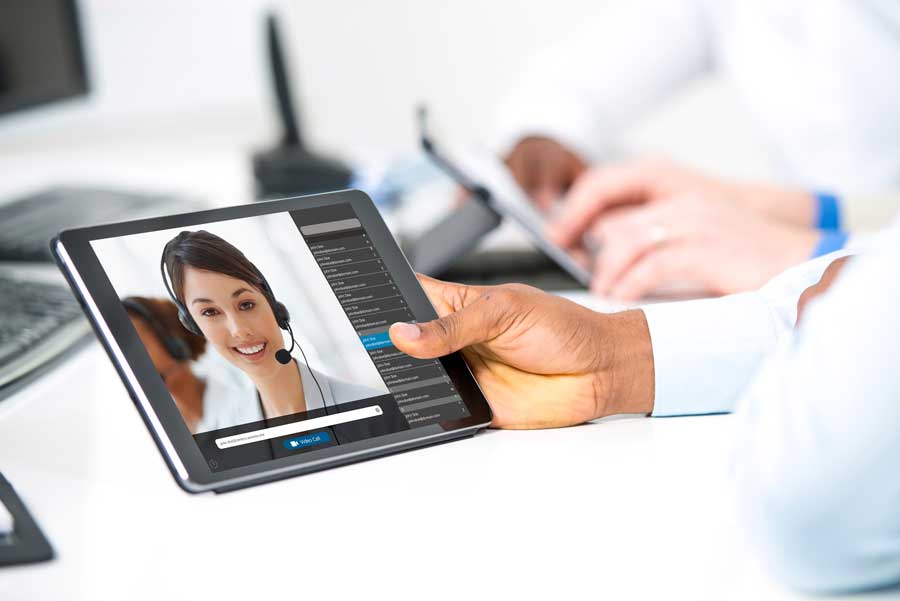How Augmented Reality Helps Field Service Workers
Getting through reality can be tough enough for an average American worker, which may be why there’s been such a push for “augmented reality” (AR) headsets to help make their jobs easier.
Not to be confused with VR (“virtual reality”), Augmented Reality can be thought of as a computer screen added to the lenses of our glasses. After you slip on an AR headset, you see the world as you did before, except with digital effects. With VR, on the other hand, the headset completely blocks your vision.
Said simply: AR is when your Snapchat lens turns your face into that of a fish. VR is when all you see makes you think you’re standing in an aquarium swarming with fish.
AR enhances your vision. VR immerses it.
Both have long been used for training simulations in the military, and as basic platforms for video games. But the AR technology is developing as everyday instruments for many workers.
How Augmented Reality Helps Field Service: Field Service Trends in 2022
Up until recently, many industry professionals had a hard time even considering an alternative to 100% on-site field service efforts. Then, in the early spring of 2020 everything changed. The COVID-19 pandemic and associated lockdowns forced many industries to explore alternative ways of doing things to manage COVID-19 impact: Field Service was no exception.
Augmented reality enables field service professionals to conduct inspections and appointments remotely—and just as effectively as if they were on-site.
But lockdowns and increased remote work aren’t the only differences we’ve witnessed in recent years. Some industry professionals are calling it the Great Resignation: A series of labor shortages across industries and professions. Companies across the country are being forced to do more with less. Augmented reality helps field service workers do just that, increasing efficiency and allowing for greater flexibility in work schedules.
Let’s check out some of the uses of field service management software in more detail.
Augmented Reality for Field Service Managers
One of the most straightforward applications of AR is with field service technicians. These men and women are on schedule, sometimes for stretches of weeks, making repairs that are meant to be rapid but also precise – a combo that’s always hard to hit.
Sometimes these technicians are just starting out in their jobs, or unfamiliar with a certain project, or they forgot to bring the manual necessary to review the task at hand.
In these scenarios, the upshot of workers wearing smart glasses while in the field is that their service manager at the control room can project data onto their visors through live augmented reality (AR) live assistance for field service teams that allow them to fix a problem or review metrics without a hitch.
A study with KSP Steel on this issue reported that workers experienced a 40% boost in productivity and a 50% cut in downtime. First-time fix rates and average repair time also improved. Effectively, AR helps to streamline efficiency, as well as strengthen communication between novice technicians and the service manager, who can coach someone through solving a problem from their base.
Broader Solutions
Not only does AR allow a manager to assist workers remotely, but it also allows mechanics to assist customers remotely.
Let’s say that a customer’s car breaks down on the road and he wants to fix the problem rather than calling a towing service. All he needs to do is download the app “Chalk and Connect” with a technician or field manager who can walk them through how to fix it through real-time video streaming.
If a customer does decide to call a service team, AR technology can help that team identify a piece of equipment’s model, past design, and how it’ll hold up in different weather conditions.
This also helps the technicians figure out the shelf-life of certain parts of your car and suggest a time to get it replaced.
AR technology is not the end-all and be-all of a field technician’s or a quality manager’s job. Experience, occupational expertise, and just old-fashioned people skills help in responding to, identifying, and fixing problems.
But the AR/VR market is expected to grow to $117 billion by 2022, perhaps because workers have found that it simplifies their jobs and minimizes a lot of frustrations by providing remote IT support.
The reality seems to be that AR remote video tech assistance is here to stay, and useful enough to lead the American worker into the future. The following users have been explained in the form of a story.
Augmented Reality in the Field
Imagine this. The field technician has access to a world of data when he shows up for his appointment. He greets the customer in his AR glasses. The nervous customer is scared about how much his service is going to cost and immediately starts asking questions. The technician already has pulled up average costs of visits and comforts the customer with average costs for a visit like his/hers.
The customer asks about the glasses out of curiosity. The tech explains how augmented reality field service makes his job easier and the customer’s experience lower in stress. The customer comments on how other companies don’t have access to this type of information in the field. The tech smiles and recounts experiences with other companies and reminds the customer how difficult it was.
Next, the field technician proceeds to fix the problem in the customer’s home. In this case, we will say for the sake of this example, he is a dishwasher technician. The tech removes the cover of the dishwasher and calls out the serial number of the device. On the augmented reality software, up pops a history of the manufacture of the device and a detailed schematic of it. He enlarges the diagram and starts to look at it.
Then he calls out the most frequent repairs, and items with high failure rates flash red in the diagram. He smiles and asks the customer to repeat the list of complaints he/she has about the device. In a flash, he locates the defective part and removes it from the dishwasher. He quickly goes to his truck and gets a replacement part.
In the time it takes him to go to his truck and get the part, he has already completed a customer invoice with the part cost and repair totals. That invoice is available for the company owner to review and accounts receivable to evaluate. He tests the fix on the dishwasher, and all goes correctly.
Without AR, the possibilities of such a fast service wouldn’t have been possible.
Collaboration & Payment Collection
The customer smiles and takes over from there. The tech tells the customer that he/she can pay for the fix online or with a credit card or cash. The customer is shocked. He/she never dreamed he could pay with any form of payment at the time the fix was completed. Being tech-savvy, this customer picks up the online invoice and pays with Paypal. Money pours into the accounts receivable, the appointment was completed in only 24 minutes and the technician is off for the next job.
The technician’s glasses have recorded the entire interaction and the video is available for chatting, training, and evaluation at a later date. It is even available for training as an augmented reality field service experience. A tech training to do this work can walk through the repair as a complete training experience. A manager can walk through the work experience for quality control, retraining, and use it for employee evaluations.
Being able to utilize virtual tools like objects, calendars, email, schematics, and other application allows field technicians and customer service employees to bring the full force of the office to their workspace. This includes collaboration.
Let’s go back to the work experience. Imagine the technician was stumped. He looked at all his information and was unable to figure out what was wrong. The technician could utilize his glasses and video chat with a more advanced technician who could help him.
Unlike in today’s world where the tech could only describe what was wrong, in an AR world, he could allow another technician to step into the dishwasher with him. The more advanced tech could look around and ask detailed questions because he/she could see everything the technician on the scene could see. There is nothing like a real-time collaboration between workers that provides a 360-degree, 3D view of what is going on.
When the competitors use remote IT support, but your company doesn’t it would become difficult to sustain the business in the industry. A smart business owner utilizes this technology first to give his/her company a strategic advantage. A smart business owner knows that leading a market is much better than following it. Often owners just look at the cost of implementing new technology. This is a myopic way of thinking. The leaders get bigger contracts. It is the modernized companies can demand premium contracts in business-to-business transactions.
It is essential to take the lead in the field, and not follow it. Business owners that follow the crowd always wonder why they don’t get the huge contracts. They don’t know that they are getting just what they deserve. It’s almost like “when you bring up the rear, you get what’s left.” Often what’s left is what nobody wants. In short, you get what you work for.
How Augmented Reality Helps Field Service Workers: The Future of Field Service
In summary, AR and augmented customer service give a company a strategic advantage in bringing to bear all the human resources in every customer transaction. This kind of power creates a more productive company. Collaboration and access to a world of information is an advantage that makes a business able enough to process more transactions and field experiences with fewer people.
The end goal will always be higher productivity and then higher profits. Only some business owners will be able to make this jump. Every business owner won’t have the vision to see this as a cost saver.
Are you one of the visionaries that sees how important this new tool is? Are you ready to lead?
To explore how augmented reality and remote video can help your field service efforts, take Blitzz for a free test drive today!




